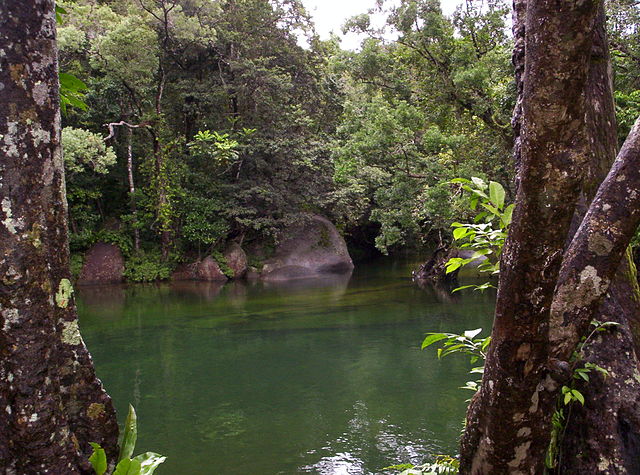Aquarium Water Change
Other than feeding, aquarium water changes will be your most often performed maintenance task. Frequent water changes are extremely important to the health of your little friends.

Warm And Fresh, Just Like A Tropical Stream
The water in your aquarium needs to be as close to the natural conditions of your little friends' home habitats as possible. Because you have an enclosed system and new water does not flow past your fish constantly, like it does in the wild, you must do frequent water changes. These changes remove built up waste and harmful chemicals from your aquarium's water. See the Nitrogen Cycle page for a better understading of this.
Keep in mind that more frequent, small water changes are much more effective than less frequent large water changes. This is because you will maintain a contantly lower level of harmful contaminants in your aquarium water.
When doing a water change, you should vacuum the gravel at the same time using a siphon hose. This removes debris and fish poop from your aquarium when you remove the old water. Below are the steps for effectively changing the water in your aquatic friends' home.
- Unplug heaters, power filters, air pumps, and powerheads. This insures that you don't get shocked if they somehow malfunction.
- Move the gravel cleaner across the bottom of your aquarium. Be sure to cover the entire bottom. The head of the gravel cleaner should be inserted into the gravel substrate completely. When you see that no debris or discolored water is being pulled up, then move it to a new spot.
- Once you have removed the amount of water that you want to take out of your aquarium (10%-50% depending on whether it is a weekley or monthly change), add water conditioner to the aquarium as instructed on the label. Always add water conditioner because your new water may contain chlorine and other chemicals that it will remove.
- Refill the aquarium with water that is the same temperature as the water that you did not remove. You don't want to shock your fish by suddenly changing the temperature. Imagine going out in the snow wet. Temperature affects fish the same way.
- Restart filters, air pumps, and powerheads.
- Wait 15 minutes and then turn the heater back on. This allows the heater thermostat to adjust to the water temperature if it has changed slightly.
Before you do a water change, you may have noticed that the aquarium water level was lower than when you filled it up the last time. Aquarium water will evaporate, more so in less humid weather. If you elect to add water between water changes to maintain your water level, always add water conditioner as instructed on the label. Also note that if you add water to your aquarium, it is not the same as a water change. You have not removed any contaminants.
Frequent water changes are the life of your fish and Nitrogen Cycle bacteria. If you do your water changes on time, your little friends will be much more healthy and active.
For more information, go to Wikipedia's Aquarium Water Change page.





